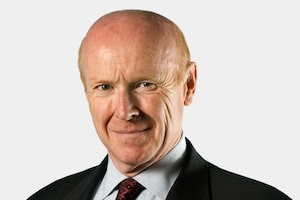When we look back, we see common practices that would be inconceivable today.
In the 1970s, conventional banking hours were 10 to 3.
In the 1980s, shopping on Sundays in most cities was banned.
And in the 1990s, over 80 per cent of mutual funds sold by financial advisers used a deferred sales charge, or DSC, which locked investors in for as much as seven years unless they paid a penalty to leave.
Over the past while, more and more advisers have moved away from the DSC to other options that provide investors with greater flexibility.
While many investors have benefited, there are also a significant number who would actually be better off under the DSC model.
How advisers are paid
For investors to make informed decisions, they have to understand how their advisers are paid.
Mutual funds investing in Canadian stocks normally charge an annual fee of about 2½ per cent.
Of that, a small portion covers accounting and legal costs and other expenses. With only a few exceptions, adviser compensation works out to roughly 1 per cent a year (of which advisers' head offices and office expenses take a large percentage) and the fund company retains the balance for managing the money.
|
More on financial advisers:
|
Advisers can receive their 1-per-cent compensation in a couple of ways.
In one option, they receive 1 per cent annually for as long as the investor owns the fund - so the compensation is absolutely level over time.
In the DSC model, advisers receive an upfront amount of 5 per cent from the fund company - and then one-half of 1 per cent afterwards. In essence, advisers give up half of their ongoing compensation to get this upfront payment.
In both cases, the amount that investors pay is the same and advisers ultimately receive similar total compensation - the only difference is the timing of when they get paid.
Tell us: What do you think?
In both models, investors have everything they've invested working for them from Day 1. The 5 per cent that advisers receive under the DSC model is advanced by fund companies; that's why investors who redeem in the first seven years have to pay a penalty, to reflect this upfront payment to advisers. Of note, the penalty doesn't kick in as long as investors switch into other funds offered by the same fund company.
Matching effort and compensation
It's understandable that investors prefer the non-DSC model, so that they can leave a fund family at any time without penalty.
And if the level of advice and service an adviser provides is even over time, this makes absolute sense. A guiding principle in compensation is that it should be roughly aligned with the expenditure of effort on the part of advisers.
Where the difficulty arises is when the work for a new client is front-loaded.
I spoke recently with an adviser who took on a client with $500,000, whose financial affairs were in total disarray. Over the next year, this adviser and his assistant spent almost 100 hours analyzing the client's situation, tracking down historical information, helping get substantial refunds by re-filing past tax returns and putting a plan in place.
At the end of this, the client called the adviser to thank him for all his hard work - and told him that since his son had just gotten engaged to a financial adviser, he was moving his account to his soon-to-be daughter-in-law.
Over the period they worked together, the adviser received about $5,000 in fees - of which his head office kept a quarter and his operating expenses took another quarter.
That meant that he netted $2,500 - and he and his assistant had earned $25 an hour, a fraction of what an auto mechanic or plumber makes.
|
Ted Rechtshaffen's Adviser Secrets series:
|
While an extreme case, this situation is far from unique.
We're in a world in which consumers are increasingly fickle - and many advisers talk about scenarios in which they've invested substantial time to develop plans, only to have clients leave after the work is done, sometimes to other advisers, sometimes for the lower costs of a discount broker.
Note that it's not just advisers who suffer when this happens - in effect, other clients have subsidized any new client who consumes big amounts of time and then leaves.
As a result, some of the best advisers are reluctant to take on clients for which there is substantial upfront time without getting compensated for that work in some fashion.
Given most investors' reluctance to pay an upfront fee, it's in these cases where the DSC can make sense - in exchange for the investor committing to stay within a fund company, an adviser is paid for the initial work on a new account.
When it comes to investing, there's an old axiom that "one size doesn't fit all."
That's obviously true of investment recommendations for clients.
And it's also true of compensation arrangements. To get to the right outcome, advisers and investors have to talk through the arrangement that's right for their situation, even if that means that investors buy funds under the DSC model and commit to staying in a fund family for several years as a result.
 Dan Richards
Dan Richards